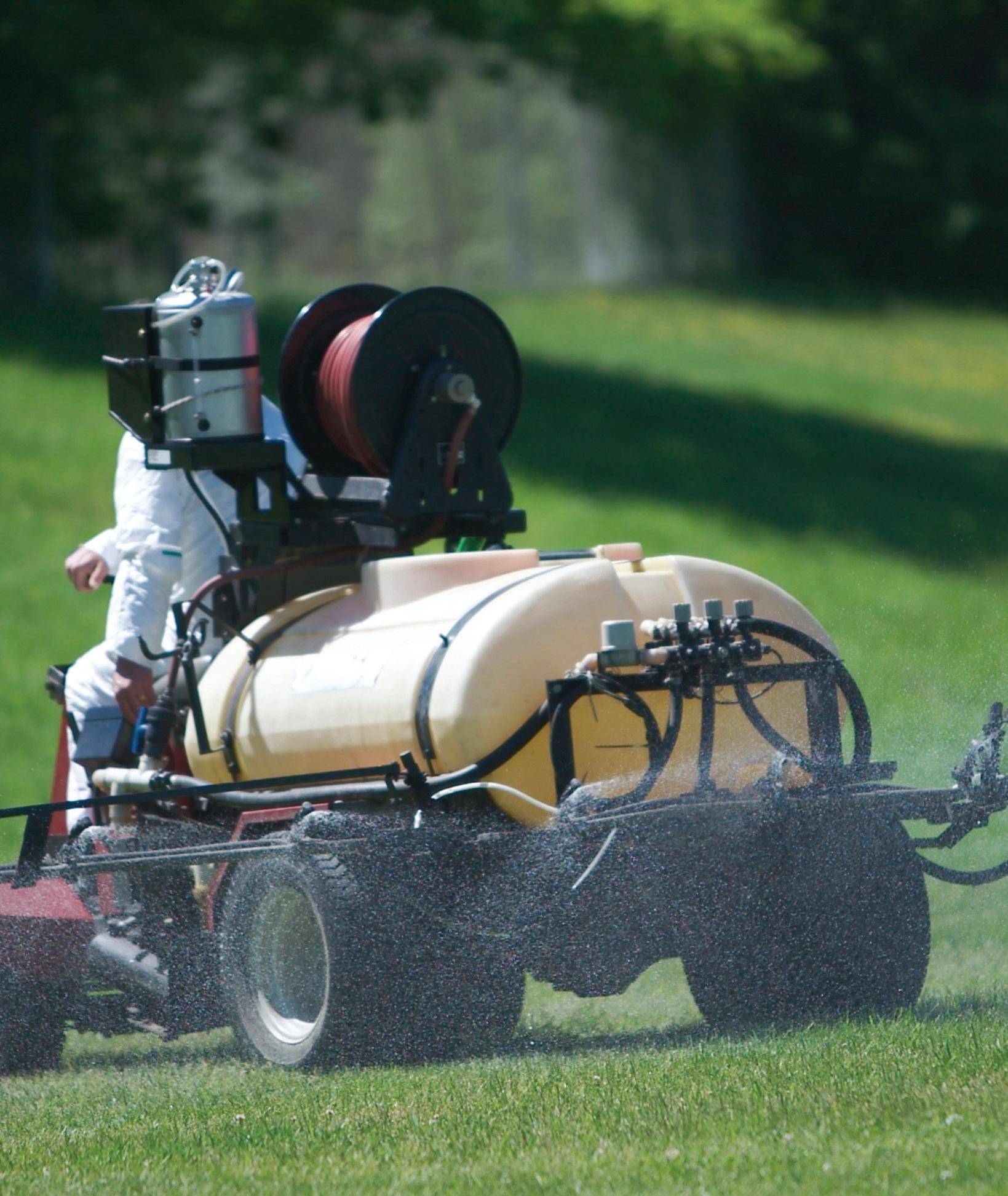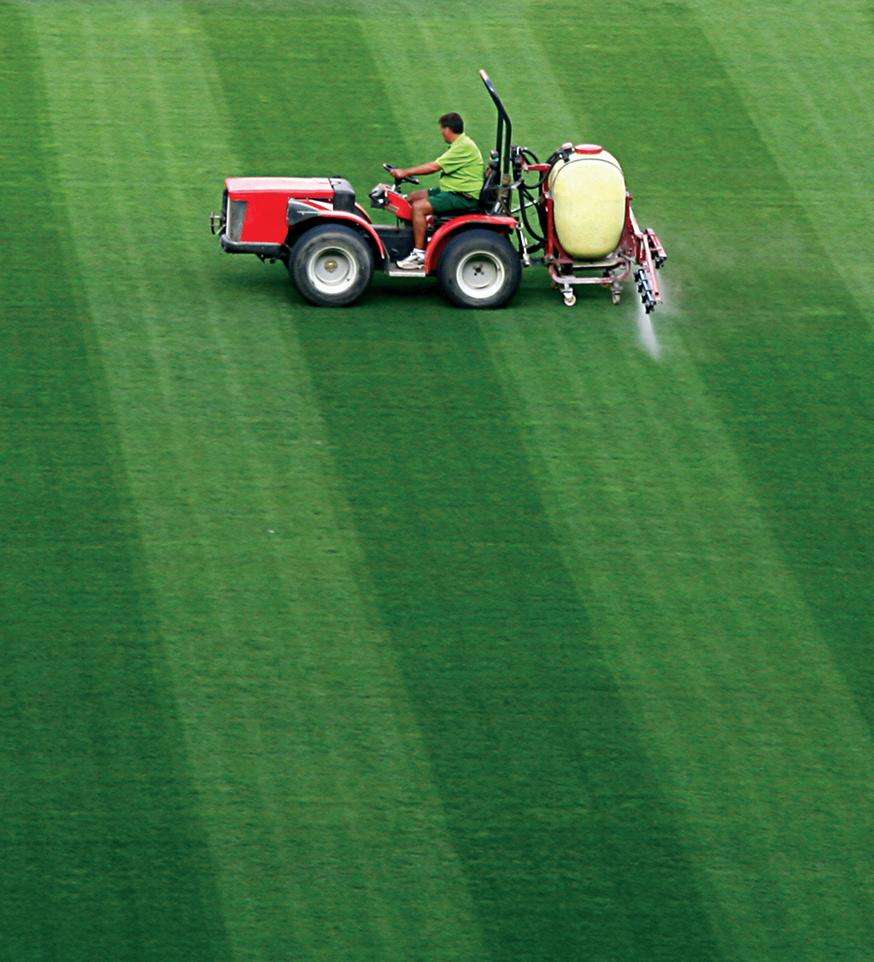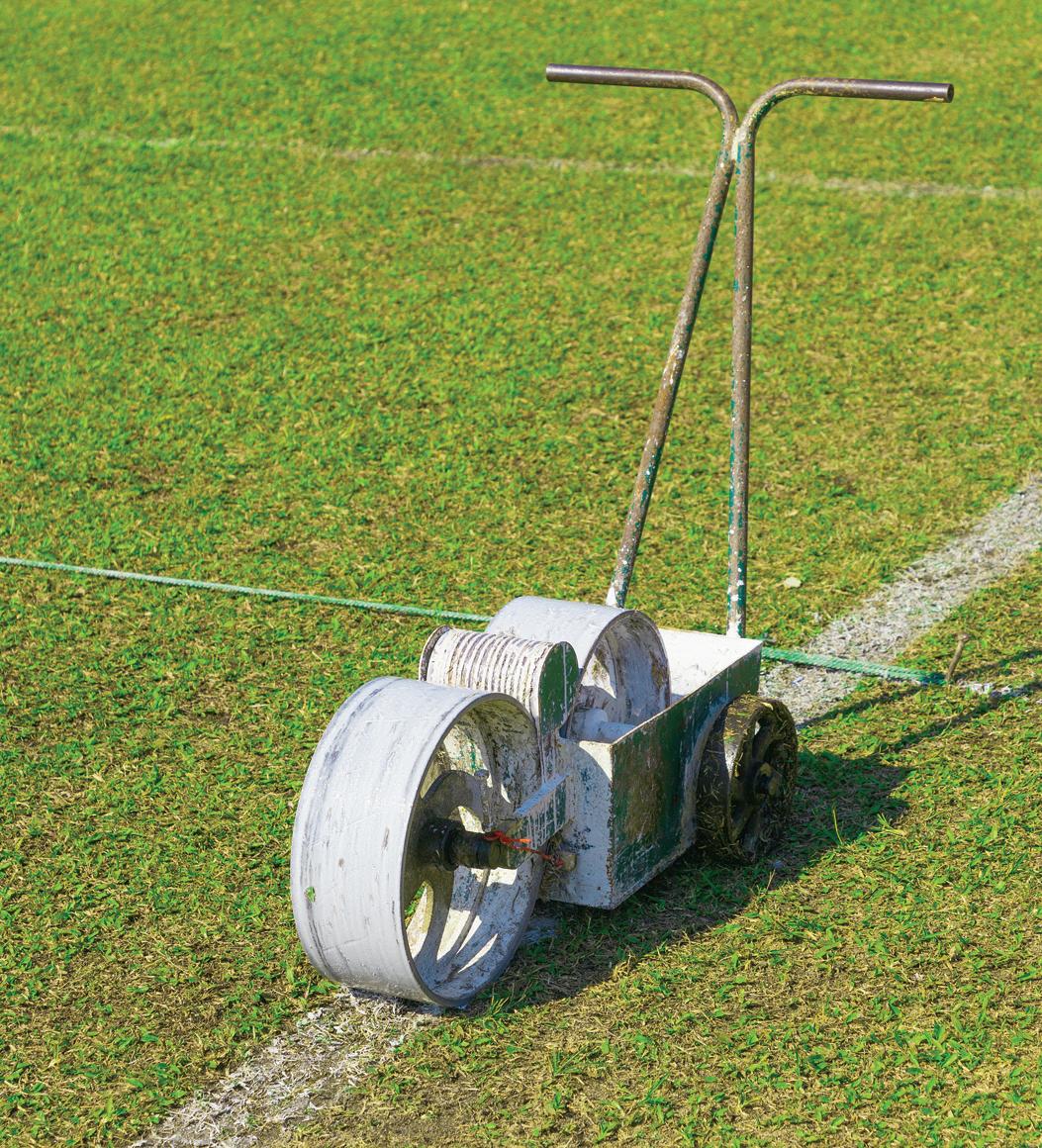
5 minute read
Why Every Sports Turf Manager Should Consider Using PGRs
By Ben Polimer
Plant Growth Regulators (PGRs) have been used in the turf industry for many years but only in the last 10 years have taken off in the sports turf world. This is mostly due to the price, as the trinexepac- ethyl (TE) patent ended only a few years ago, making off-patent product affordable. I also think the fear of using these products has come down with the increased use. For those who want to start slow with these products, consider using them in paint first. A gallon jug is inexpensive and will go a long way. I will address using the products in paint later.
Advertisement
The purpose of these products is to reduce growth. PGRs are classified in two categories: Type I and Type II. Type I are foliar adsorbed, an example is Mefluidide (Embark). Type II are broken into 2 categories, Class A- foliar adsorbed and gibberellic acid is inhibited late in the process. Examples are trinexapacethyl (Primo) and Prohexadione calcium (Anuew). Class B are root absorbed, gibberellic acid is inhibited early in the process. Examples are Paclobutrazol (Trimmit) and Flurprimidol (Cutless). Most of my experiences are with Class A products, and I think sports turf managers unfamiliar with the use of PGRs should use Class A products to start.

PGRs are great products, but they are never a substitute for good agronomics. PGRs should never be applied when turf is stressed. Do not apply them to dormant turf.
Using Growing Degree Days (GDD) has become a very good tool for application of all kinds of products. Using GDD for PGR usage is a great way to predict timing for reapplication. I personally don’t use GDD for PGR application for a couple of reasons: I don’t own a sprayer and MA State laws restrict EPA labeled product application timing. If you want more information on using GDD. I highly recommend looking at Dr. Bill Kreuser’s work at University of Nebraska- Lincoln. http://turf.unl.edu/highlighted-research #regulator
There are up to 10 benefits of using PGRs in your program. They are different for every turf manager and every facility. Here’s the top-10 list as referenced by Pam Sherratt and Dr. John Street in Sportsfield Management magazine:
• Reduce clippings
• Enhance color, texture and density
• Extend life of painted lines
• Prevent tissue elongation
• Increase sod strength and divot resistance
• Better fall color and spring green up
• Wear tolerance and recuperative potential (rebound)
• Improved drought and heat stress tolerance
• Improved shade tolerance
• Increased root length and mass
Most of my PGR usage has been with TE and on cool season grasses, mainly on Kentucky Bluegrass/Ryegrass/Poa Annua mix sports fields. Usually I am applying TE with a “cocktail” of other products like insecticides, wetting agents, and herbicides. When applying TE, expect a 50% growth reduction in 3-5 after application. Discoloration will happen! It will dissipate and then in subsequent applications the turf is used to the application and will in turn have darker turf.

When reducing vertical growth, that in turn increases density. Mowing alone will not replicate the density of turf without the application of TE. It is noticeable to the novice.
Extending the life of paint lines might be a great starting point for the sports turf manager with little to no experience with using PGRs. I recommend halving the rate of the label of TE and mixing it with your bulk paint. Paint with PGR can be used every 3 to 4 weeks and will help keep lines. It can reduce the need for restringing during off play periods. Can it work to hold logos in between home games? Will it hold numbers and hashes on a football field in between home games? I caution using TE in wheel -to-wheel painters. Play with the rate. It’s a great tool, I highly recommended it.

If you use growth covers, flooring, or other types of coverings on turf, you can use TE to “pre-condition” the turf. Reduce the growth while under the cover and time the “rebound” when the covering comes up. A Penn State University study concluded that a sand-based root zone can have reduced divot size by 10–20 percent. In a native soil field, the divot size can be reduced by 10 percent.
TE applications early in the spring and late in the fall can help with better spring green up and better fall color. I have done applications late in the summer, it seems to hold color longer in those cool nights of the fall. With our application restrictions in Massachusetts, I have not done a fall application. I have seen painted lines in the fall green up faster than the surrounding turf.
Besides the use of PGRs in paint, using the “rebound” effect, the regrowth of the turf plant coming out of suppression, can be the turf manager’s best friend. If you have a field not used in the spring or summer (football only) but the field is under suppression all summer long, time the rebound when games start in early September. “Growing out” damage can help get through the tough season. If fields are not used in the summer, and mine are not, we apply PGRs in summer to reduce mowing. I time the last application to help “grow out” damage from fall soccer.
Other advantages with using PGRs will have reduced turf decline from both tree and stadium shade. This makes sense when reducing vertical growth. There have been mixed findings on increased root length and mass on cool season turf according to Sherratt and Street. Bermudagrass has shown an increased root length and mass.
Personally, I did not have great success with this product, but there is one on the market for reducing trimming around trees and fence lines. I thought it was very expensive and didn’t perform that well. Granular PGRs are still around and do have some application in small areas like lawns, little league baseball infields, anywhere spraying might not work.
Ben Polimer is Fields and Grounds Coordinator for the Town of Weston, Massachusetts. Reach him directly at polimerb@weston.org.










